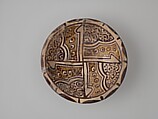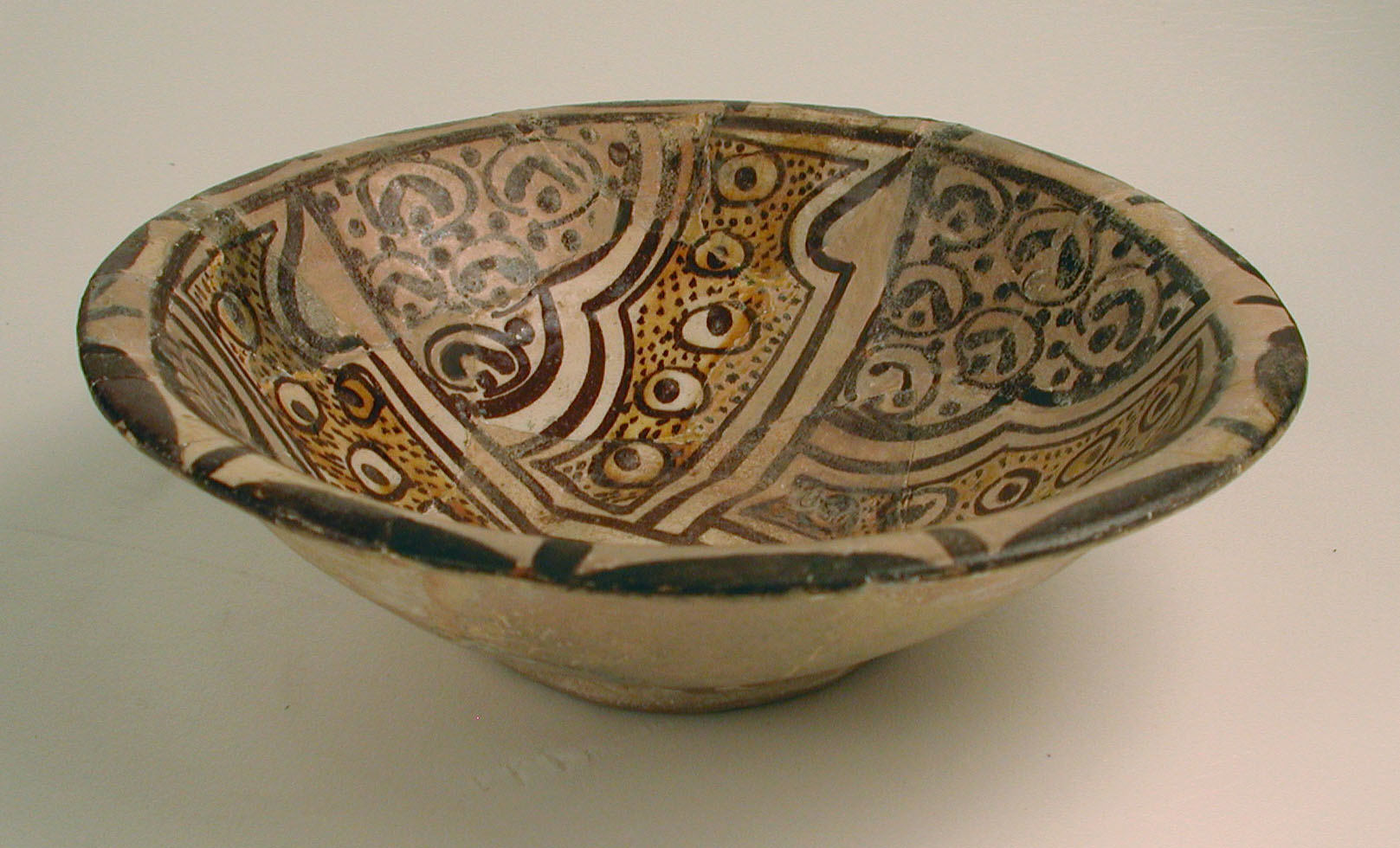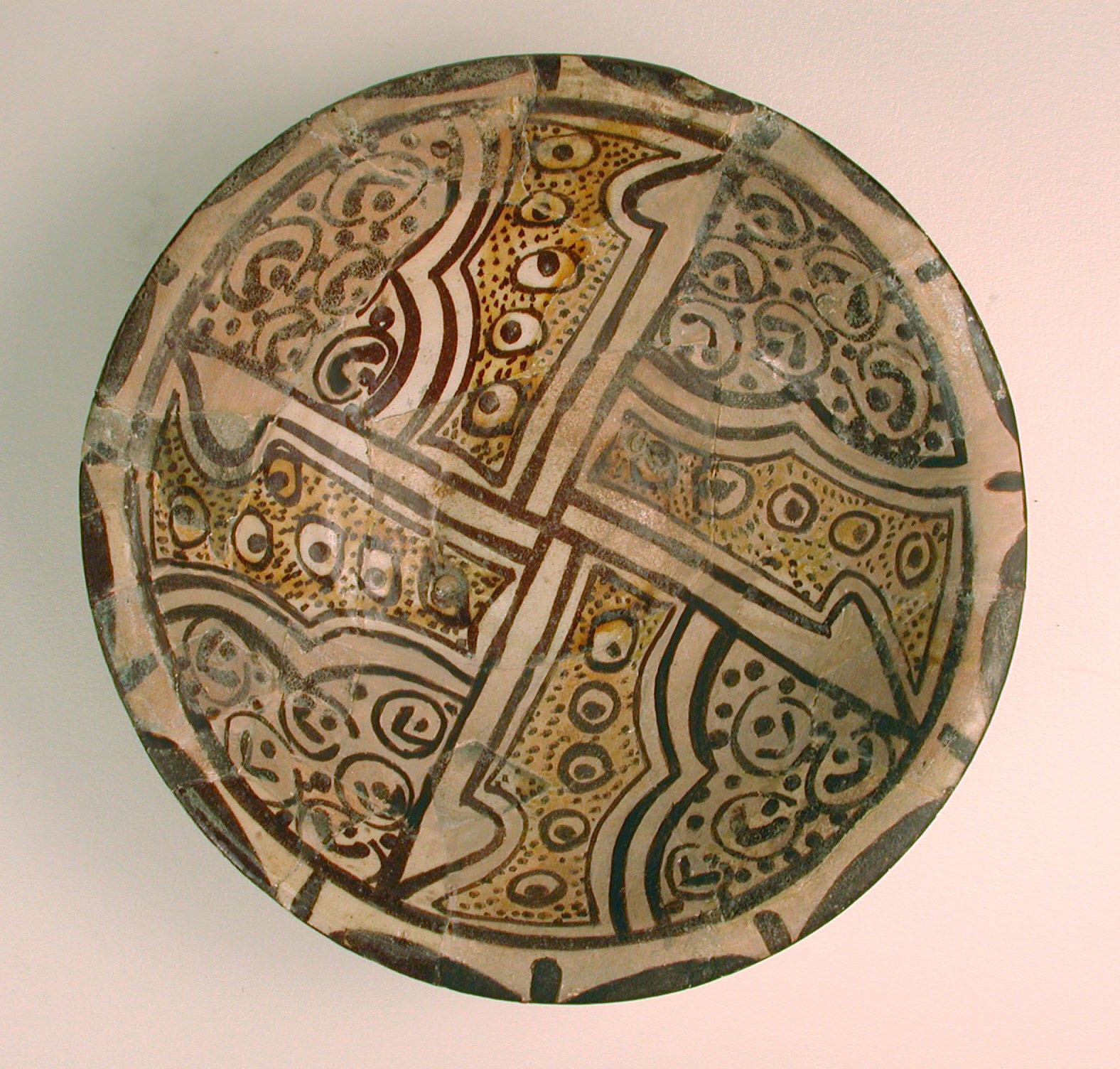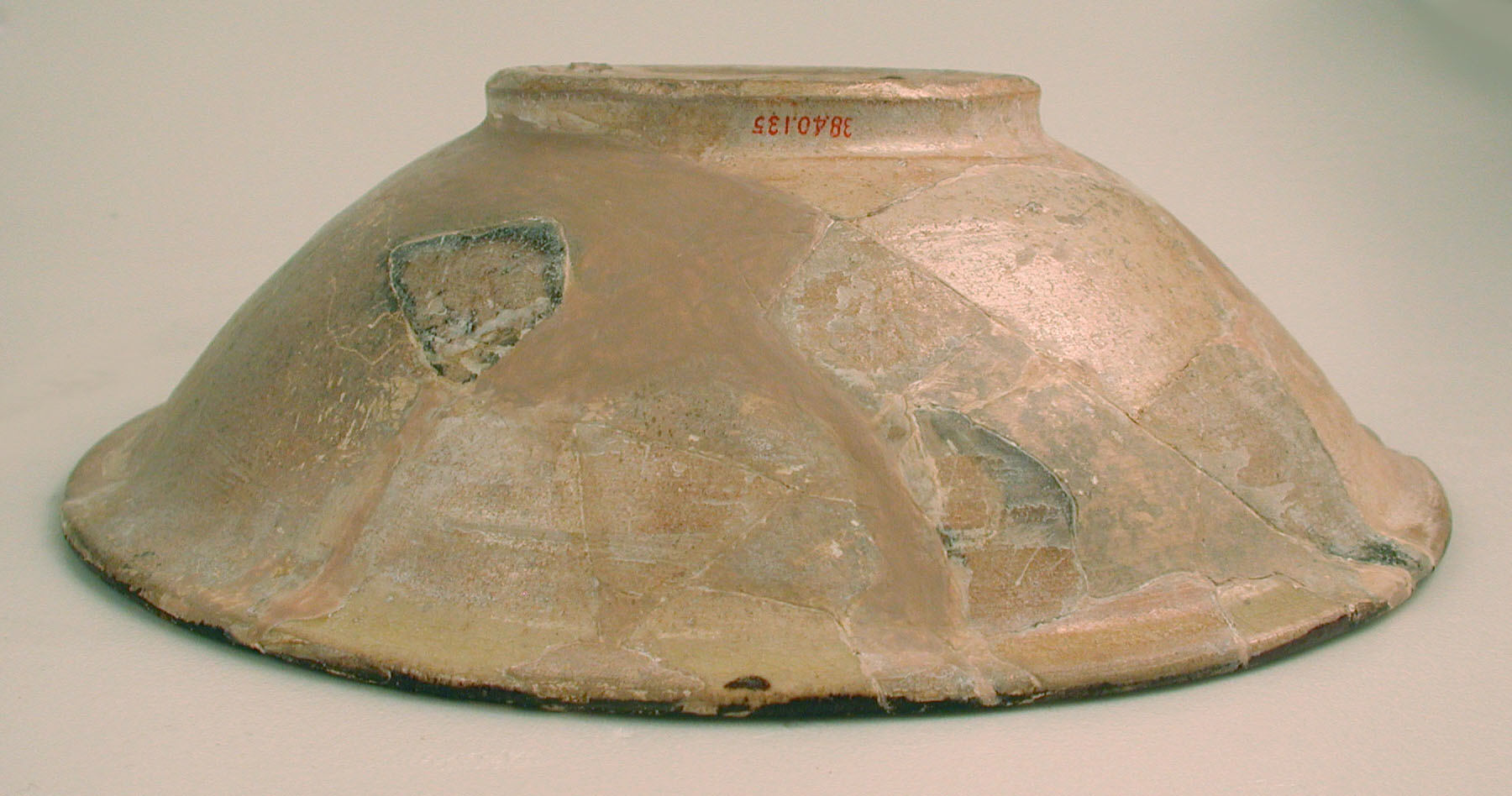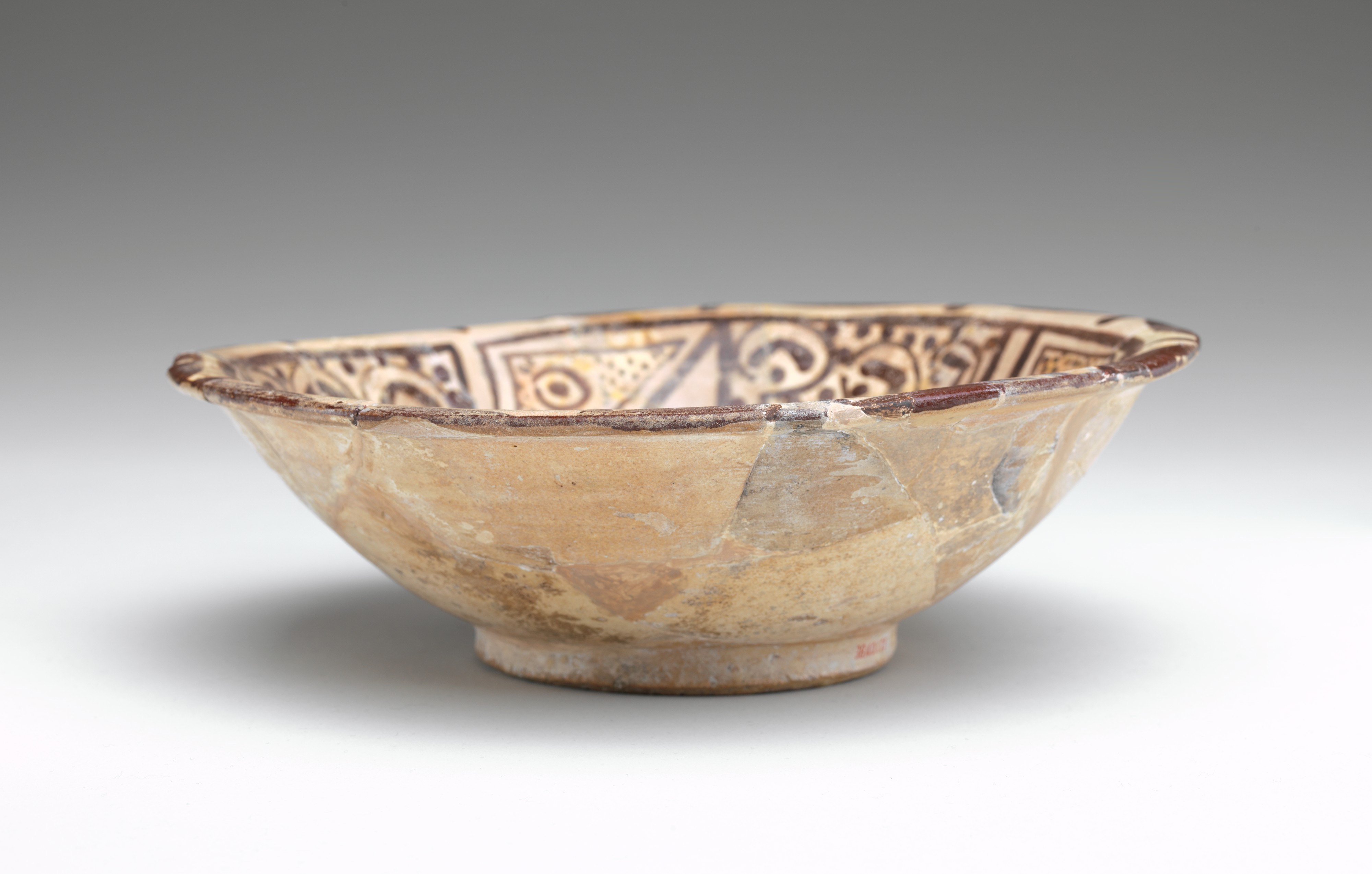Imitation Bichrome Luster Bowl
The decoration of this bowl imitates a type of luster ceramic usually dated to the mid- to late ninth century, characterized by the use of two shades of a brownish-gold glaze. Instead of being made with the metal-based glaze of luster ware, though, this bowl is decorated with brown and yellow glazes made of diluted clay. Its interior is divided into quarters by projecting vertical strokes; each quadrant is decorated with the "peacock-eye" pattern so common on luster wares of this period.
Due to rights restrictions, this image cannot be enlarged, viewed at full screen, or downloaded.
This artwork is meant to be viewed from right to left. Scroll left to view more.
